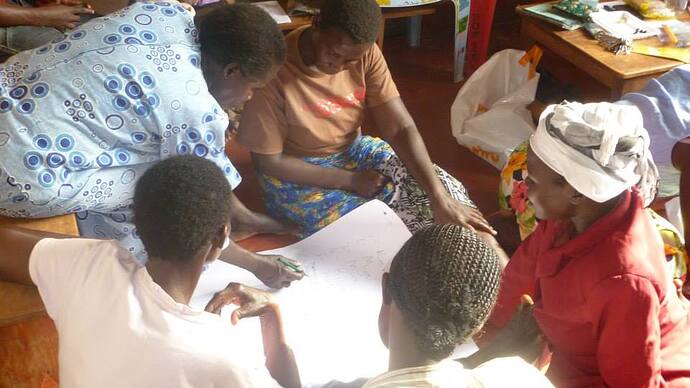questions
Hi,
I’m going to show no enthusiasm for this at all, as it is a real life adventure and hence fully serious. I wish you luck and if we can help from such a distance (6000 km), then of course some of us will give it a good try!
First, some questions: 30 women is how many people in the full set of (I guess somewhat interlinked) families? All in good health, or maybe not all can walk long distances and some need medication, etc? I ask this to try and quantify things like food, yurts or whatever, transport, etc. The model I’m using is Vinay’s ResilienceMaps.org - not in concentric circles but in spreadsheet format: one row for each need (protection against too hot and too cold, food and water, protection from disease and agression, transport, communications, etc), and the first column has the quantities needed: how much food and water per day, how many square meters of shelter, etc. We’re not there, you see!
Why 60 roundtrips? Is that a number of people x a number of trips? I’m confused with this piece of data. Also, what are the trips for exactly? Couldn’t some people stay there for some time, to avoid the trips?
Have you already physically looked at the land? What’s it like, and where approximately is it located? (I see: 400 km north of Kampala. Roads may make that a much longer trip.) Is it one block of land or several small patches? (You say 22 fields, but are they separate?) I’d tend to look at it in “emergency permaculture” terms, with a view to design a fast start into basic productivity without compromising long-term fertility. The obvious questions are where, climate, water sources, other living entities there (cattle, wild animals, humans of different level of friendliness). You say you want to use “new agricultural techniques”, and it makes me wonder what these techniques are. I’d be glad to look for permaculturists near where you are, and ask specific questions on your behalf in an online course I took last year and which, apparently, we older students will be allowed to take this year too (forum included!). (Ref geofflawton.com, @geofflawton_ in twitter.)
Pigs. We need to look into George Chan’s work, maybe.
In short, if we could have some basic data, and if we could know the profile of the people who are already helping you technically, we could try and behave complementarily to whatever you have. I’m just in the very first steps of the process of learning what permaculture is about, but: I could ask the more experienced ones, and we could try and look into what needs to be asked of the situation itself to help with local thinking.
I’m a public health doctor, not an agriculturally experienced person at all. This means two things. The first is I have difficulty in telling a potato from an onion without help, but I can learn and search the internet. It also means I can look at the public health concerns of the region, if that helps.
Communications: is there good phone connectivity at that place? Frontlinesms might be useful if needed.
One last suggestion: video. We might look into what akvo.org folks do, to document stuff and send that documentation to helpers, donors, and interested people in general. This might be thought of since the onset, in order to include it as part of the crowdfunding: videocam (and transport to hub) needed, reports promised, or whatever. Also, for connectivity, Smari has some experience with chickenwire antenae - not sure if that has been mentioned.
So, to summarise: there are lots of potential ideas floating around, but to nail them into the specificities we’d need some more local information (people, place, needs, haves) if at all possible. Thanks.
(Forgive the messiness of my post. This project elicits many questions and ideas and I find it hard to frame it in an orderly fashion right now.)
